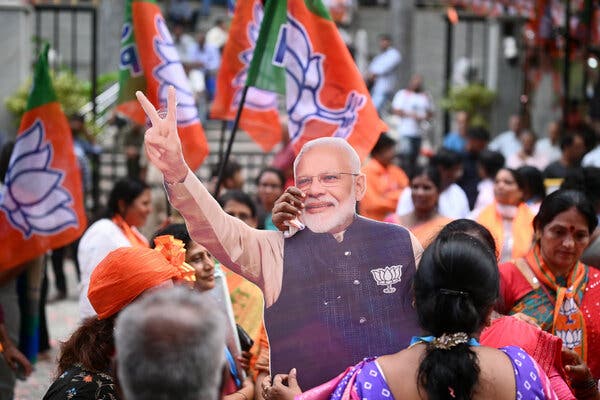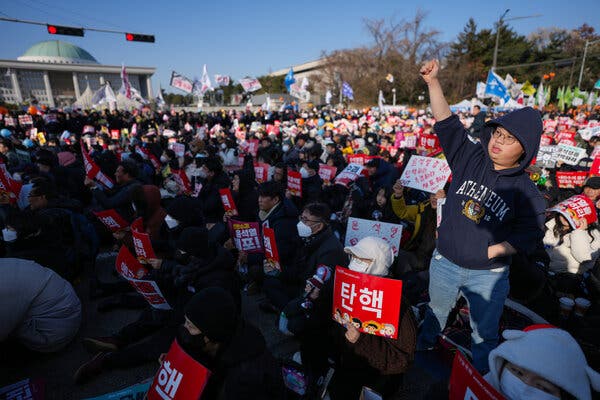Prime Minister Modi was re-elected, but his party fell short in dominating Parliament. Was that an inflection point for the world’s largest democracy?

This article is from a special report on the Athens Democracy Forum, which gathered experts last week in the Greek capital to discuss global issues.
Prime Minister Narendra Modi of India was elected to a third term in office in June, but his Bharatiya Janata Party failed to win a simple majority in the lower house of Parliament, surprising political observers inside and outside the country.
With the B.J.P. winning only 240 of the 543 seats, far short of the 300 that party members had hoped for, Mr. Modi now leads a coalition government.
India and the Allure of Modi, a panel discussion at the Athens Democracy Forum on Oct. 3, addressed this issue, focusing on the appeal — and the shifting role — of this galvanizing figure and the future of Hindu nationalism that had cemented much of his power.
Ahead of the Democracy conference, two of the panelists, Yamini Aiyar and Maya Tudor, were interviewed by video for their take on Mr. Modi’s future and what it portends for the world’s largest democracy and for other democracies facing elections. Ms. Aiyar is a visiting senior fellow at the Saxena Center for Contemporary South Asia at Brown University and Ms. Tudor is the professor of politics and public policy at the Blavatnik School of Government, and a fellow at St. Hilda’s College, both at Oxford University. The panel was moderated by Jyoti Thottam, senior editor and member of The New York Times editorial board.
The interviews were edited and condensed.
What is the allure of Narendra Modi, and how has it evolved?
MAYA TUDOR Modi came to power in 2014 on the heels of several corruption scandals that had marred the previous governments. He was able to nationalize a strategy he had really honed in the state of Gujarat when he was the chief minister, which was to polarize in places where doing so reaped political dividends.



